Contents
1. Various deities created from God
1.1 Causes for creation
The word svayambhu [self-manifest (स्वयंभू)] has been derived from two words svayam (स्वयं) and bhu (भू). Svayam means by oneself and bhu bhavati means to be or to exist. Origin of The Lord’s resolve of ‘Let Me manifest in several forms from My being single (एकोऽहं बहुस्याम्)’ is called Svayambhu. This thought of creation is extremely subtle.
1.2 Essential components
For both, creation of the universe from The Supreme God and its blending with Him, that is for its dissolution, the following five components are necessary : 1. The thought of creation and its occurrence accordingly, 2. Merging with The Supreme God again and experiencing Bliss from it, 3. Components required for the merger, 4. Sustenance of creation for sometime and 5. Multiplication of creation.
Among these components 1. ‘Creation’ is immediately followed by 2. ‘Merging with The Supreme God’. The order is not 1. Creation, 2. Sustenance, 3. Multiplication, 4. Components required for the merger and 5. Merging with The Supreme God, because after creation if one is not shown how much Bliss there is in the experience of union then no one would have paid any attention to the factors necessary for the union, not realising the significance of the union after sustenance and multiplication.
The five components in the order given above are said to be Prajapati, Brahma, Shiva, Vishnu and Minakshi respectively. Let us refer to Them as the five deities (panchadevata). Detailed information on Them is given below. According to another school of thought the order of these five components is Prajapati, Brahma, Vishnu, Shiva and Minakshi. Creation is the mission of the masculine principle whereas sustenance and growth are those of the feminine principle.
Prajapati: When God’s thoughts for creation of the universe become stronger, by materialisation of these thoughts, the components necessary for creation become available in subtle quantities. That itself is called Prajapati. In other words, creation is a mission (special feature) of Prajapati. It is because of this materialisation that Prajapati has acquired a form and is the first deity. The 32nd chapter of Vajsaneyi Madhyandin Sanhita states that nothing was created before Prajapati and that He is the first and The Supreme God.
Brahma: Frequencies of the experience obtained while merging with The Supreme God after being created from Him, is referred to as Brahma (Brahmadev). In other words, Lord Brahma’s mission is to impart the spiritual experience of The Supreme God.
Shiva: Frequencies of absolute purity, spiritual knowledge and austerities (spiritual practice) which are required to merge into The Supreme God are referred to as Shiva.
Vishnu: One has to assume a body to get a spiritual experience. To sustain the created universe atleast for sometime the essential frequencies are called the deity of nourishment (annarasadevata) or Vishnu. This means that nurture is Vishnu’s nature and duty. Conversion of the subtle into the gross is also Lord Vishnu’s function. He is the deity of the divine blue water (niltoya). [Refer ‘Science of Spirituality : Chapter 38 – Path of Activation of Spiritual Energy (Kundaliniyoga)’.]
Minakshi: Frequencies required for the multiplication of creation are referred to as Minakshi. Minakshi’s function is to bring about quantitative multiplication (growth), not to convert the subtle to the gross. She assists in the expansion of spiritual experiences and in maintaining its continuity.
1.3 The five deities (panchadevata) and the universe
Prajapati, Brahma, Shiva, Vishnu and Minakshi of every universe (brahmanda) are different. However The Supreme God and God of all the universes are the same.
1.4 The three deities and the three components
The three components sattva, raja and tama were created after the creation of Brahma, Shiva and Vishnu. The three deities mingled Their frequencies with the three components. Thus, They became supporters of the three components (gunashrayi) though They Themselves are not constituted by them. Stability is the only common feature of the three deities.
Out of Prajapati, Brahma, Shiva, Vishnu and Minakshi, Shiva and Vishnu are deities who are worshipped. Hence detailed information on Them is given in ‘Science of Spirituality : Vol. 9 A – Shiva and Vol. 8 – Vishnu and His Forms’ respectively. Here only Prajapati, Brahma and Minakshi have been discussed.
1.5 Ability for creation, sustenance, dissolution and manifest energy of the five deities
| The five deities |
Ability | Manifest energy % |
||
| Creation | Sustenance | Dissolution | ||
| 1. Prajapati | 95 | 5 | 0 | 10 |
| 2. Brahma | 70 | 20 | 10 | 10 |
| 3. Shiva | 10 | 30 | 60 | 10 |
| 4. Vishnu* | 10 | 75 | 15 | 10 |
| 5. Minakshi | 33 | 33 | 34 | 100 |
* The Vishnu principle is the subtlemost form while Vishnu is a less subtle form of Lord Vishnu. The ability for creation, sustenance and dissolution of the Vishnu principle is 2%, 96% and 2% respectively. The ability mentioned above is with respect to the subtle form of Vishnu. The same is applicable for Shiva and Minakshi.
1.6 Creation of some main deities
When two objects interact, a new object is created. For instance when the colours blue and yellow are mixed a green hue is created; two atoms of hydrogen and one atom of oxygen unite to form a molecule of water. In the same way when energies of two deities merge, a third deity is created. For example the sattva predominant Shiva principle and the sattva predominant Minakshi principle jointly give rise to Ganapati. In simple mythological terminology this is explained as Ganapati, the son of Shiva and Parvati. The following table shows how certain deities were created. Deities associated with Shiva, Vishnu and Divine Energy (Shakti) are given in ‘Science of Spirituality : Vols. 9 A, 8 and 9 B’ respectively. In the table below reference of the sattva, raja and tama components with regard to Shiva, Vishnu and Minakshi (Divine Energy), that is with regard to Their supporting the three components is made. They are actually beyond the three components.
| Shiva Principle | Vishnu Principle | Minakshi Principle | ||||||||||
| Sat tva |
Ra -ja |
Ta- ma |
To- tal |
Sat tva |
Ra -ja |
Ta- ma |
To- tal |
Sat tva |
Ra -ja |
Ta- ma |
To- tal |
|
| 1. Gana -pati |
50 | 10 | 10 | 70 | – | – | – | – | 10 | 10 | 10 | 30 |
| 2. Karti -keya |
30 | 10 | 10 | 50 | – | – | – | – | 10 | 20 | 20 | 50 |
| 3. Indra | – | – | – | – | 20 | 20 | 10 | 50 | 10 | 30 | 10 | 50 |
| 4. Datta | 10 | – | – | 10 | 50 | 10 | 10 | 70 | 10 | 10 | – | 20 |
| 5. Par- vati |
10 | 10 | 10 | 30 | – | – | – | – | 30 | 30 | 10 | 70 |
| 6. Lak- shmi |
– | – | – | – | 10 | 10 | 10 | 30 | 30 | 30 | 10 | 70 |
| 7. Sara- svati |
30 | – | – | 30 | 30 | – | – | 30 | 20 | 10 | 10 | 40 |
2. Prajapati
2.1 Origin and meaning
The word Prajapati (प्रजापति) is derived from two words praja (प्रजा) and pati (पति).
Praja: Praja means ‘प्रकर्षेण जायते’ that is taking birth specially, for a specific mission, etc. One comes across ‘(pra) jyasuhu’ in the Rugveda in which pra is assumed to avoid loss of a part of a verse. Praja means evolved [unnat (उन्नत)] progeny. In unnat, unna (उन्न) means higher and nataha (नत:) means to go. The significance of having evolved progeny is that due to austerities of that progeny its parents can easily attain the pitru region (pitrulok) after death. Unevolved [avanat (अवनत)] progeny refers to animals (pashu), ava (अव) means lower and nat (नत) means to go.
Pati: It means the one who nurtures, for example Pashupati. Prajapati is the deity who creates progeny and nurtures it.
2.2 Some other Names
Vruddhadev (the oldest among deities, because He is the first deity); Kameshti dev (the one who fulfills desires); Dayanidhi / Nidhichang (creation itself is considered as an act of compassion).
2.3 How did Prajapati bring about creation?
A. One school of thought: Prajapati was created from God through the medium of Svayambhu. Thereafter He was alone for several years. Basically His existence was potent but unmanifest. He then thought to Himself, ‘I should manifest in several forms from this single form (एकोऽहं बहुस्याम्)’. Hence He undertook austerities for a long time. Due to the powers acquired from this penance He created an energy endowed with a feminine polarity. That energy is called the Primal Mother, Aditi. Aditi (अदिति) is derived from adihi (अदि:) and atihi (अति:). Adihi means the foremost and atihi means one who is manifest. Aditi also means one who is limitless.
Aditi (आदिति) is also written as Aditi (आदीति) [Adi (आदि)+ iti (इति)]. She is called Aditi because She is the only woman created by Prajapati. Aditi is also known as Brahmakumari, Yoshiti and Vadini.
In conjunction with Prajapati, Aditi created 26 other feminine principles (particles). Hence He is considered as the promoter of feminine principles, the deity giving rise to feminine principles. Parvati, Lakshmi, Sarasvati, Minakshi, Pruthvi, Svaha, etc. are all forms of Aditi. They are also referred to as yoginis, deities of the lunar asterisms (nakshatradevata), yoginis of the lunar asterisms (nakshatrayogini) and daughters of the lunar asterisms (nakshatrakanya). With the powers obtained through this penance Prajapati created two polarities of the main masculine principle. One of these main masculine principles united with 27 female principles (Aditi + 26 others) and acquired the spiritual experience of Bliss. [When there is union of the male and female principles, that is non-duality (advait), the spiritual experience of Bliss is obtained.] This state of spiritual experience of Prajapati is called Brahma (Brahman), that is worthy of experience. [The root of this word is bru (बृ).] Prajapati is the generator of Bliss while Brahma is the bestower of the spiritual experience of Bliss.
According to the Purans Prajapati created a feminine energy from His left shoulder. In other words He granted a manifest form to the unmanifest.
Bruhaspati: The complete potent form of Prajapati which is worthy of spiritual experience and the conjoint state of reproduction, that is the conjoint state of Brahman and Prajapati is Bruhaspati. Bruhaspati was born in both ways namely the sexual union of Prajapati and His 27 daughters as well as by spiritual experience at that time, that is by a mere resolve (sankalpa). Thus Bruhaspati became the presiding deity of both the methods of reproduction – through the birth passage and with a resolve.
Narad: The second masculine principle created by Prajapati gave birth to the son of Brahma, Sage Narad [Narad (नारद) = nru (नृ)- naradaha (नरद:)] by natural union with other feminine principles from the null universe. He is considered as the foster son of Prajapati or Brahma who was born out of a resolve.
Different schools of thought
1. Rugveda: Prajapati first created 27 daughters (yoginis, nakshatradevata, nakshatrayogini, nakshatrakanya) and then through the medium of Bruhaspati created 27 deities in the masculine form. They are called Prajapatidaksha or deities of the lunar asterisms (nakshatradev). They live in the region of the lunar asterisms (nakshatralok).
2. Yajurveda: In the Yajurveda two references state that Prajapati and Brahma are one and the same. However there are references to the contrary too. In the Yajurveda Kuber, the deity of wealth and the demigods (yakshas) are also considered as forms of Prajapati.
- Modes of birth – through the birth passage and out of a resolve (sankalpa)
1. Through the birth passage: The birth passage means a receptacle for energy or a restriction. Since it implies bondage one is born only after being trapped in bondage. Hence through the birth passage reproduction occurs by physical union.
2. Out of a resolve : Birth is immediate, without being trapped in the confinement of the birth passage. It occurs out of a resolve. Prajapati has no region or abode (lok) like the Go region (Golok) of Lord Krushna. But Brahma, Shiva, Vishnu and Minakshi all have Their respective abodes. In these abodes there is no physical contact (gharshan), that is progeny is not created through intercourse, rather is created out of a resolve. Hence these regions are also called regions without physical union (aghamarshan lok).
The human body has three main channels (nadis) of spiritual energy – the Ida, Pingala and Sushumna whereas the universal body has the Sun channel (Surya nadi), Moon channel (Chandra nadi) and the Vaishvanar channel (Vaishvanar nadi) as channels. The Pingala or Sun channel represents positive principles whereas the Ida or Moon channel represents negative principles. The Sushumna or Vaishvanar channel represents offspring, that is the effects. When one inhales simultaneously through the Pingala (Sun) and Ida (Moon) channels that is both nostrils, the Sushumna (Vaishvanar) channel becomes operational. Hence here there is origin of radiance of the sun, Bliss of the moon and the origin / creation of Vaishvanar. At such times creation occurs according to a resolve. This process is referred to as urdhvaretas. Vatsyayan, the author of Kamasutra refers to this as ‘viparit karni (the inverse process)’.
B. Analysis in the form of a story: When the Primal Mother (Aditi) was born She was blossoming with youth. Prajapati asked Her “What should I do to become manifold ?” She replied, “You are great. I will not be able to bear Your children”. So with Aditi as the medium Prajapati created 26 daughters. These 27 young women including Aditi accumulated 27 ova (27 principles were thus created). Then Prajapati created two drops of semen in His mind [by means of resolve (sankalpa)]. A son born from one drop of semen is called Bruhaspati. Basically He is the first son of the Primal Energy (Adishakti). Prajapati gave the second drop to the atmosphere and Narad was born from it.
Incest (relationship between the father and daughters): Prajapati performed the task of giving a manifest form to feminine principles and hence is considered as the creator or the father of these women. Since Bruhaspati was born by contact with these daughters, Prajapati (a variation : Brahma) is said to have an incestuous relationship with His daughters.
Other examples of incest with daughters: ‘Since the sun nurtures creation it is considered as Prajapati. Every morning on the eastern horizon usha (dawn) arrives before the sun. Usha is born from the sun; hence is its daughter. The sun implants its semen in the form of its rays and gives birth to a son in the form of a day. Thus the day-to-day relationship between the sun and usha continues through the relationship of Brahma and His daughter.
The spiritual connotation of this story goes thus: In the Vedas the mind is referred to as Prajapati and speech is referred to as Sarasvati. Man first makes a resolve and then expresses it in words. So, the mind rules first and the speech later. That is why the mind is called the father and speech is said to be the daughter. When the mind in the form of the father impregnates its daughter, speech with the semen of inspiration, a son is born in the form of a word.’(1)
C. Analysis according to astronomy: ‘Prajapati was overcome by lust at the sight of His daughter and assuming the form of a deer had intercourse with her. The deities condemned this as a base and punishable offence. But none of them were capable of punishing Him. Hence all of them accumulated the fearsome component from their bodies and created a ferocious being. That is Lord Rudra. Rudra shot down Prajapati with arrows.
This Rudra is the hunter in the sky. The star Rohini is the daughter of Taraka Prajapati. In the skies one can view a deer chasing Rohini and Prajapati in the form of a deer struck in the abdomen by the tri-pronged arrow shot by the hunter. The semen ejaculated by Prajapati at that time created various living organisms. Then the deities were pacified and venerated Prajapati.’(2)
D. Analysis according to the physical sciences:
Prajapati is composed of three components – the proton, electron and neutron. (Creation of protons or electrons from neutrons can raise their number.)
After 300 years of penance, reactions started within Him.
One electron was emitted as a consequence of the reactions. In other words the Primal Mother (Aditi) was created. (Due to its ‘zero stress nature’ an electron can remain by itself.)
Interaction between Prajapati and the Primal Mother began; that is the concept of multiplication from a single being originated in His mind.
26 more electrons were created from one electron. Thus including the first in all there were 27 ‘electron’ particles.
Prajapati created two protons (principles from semen). The first proton united with the 27 electrons, i.e. got compounded and Bruhaspati came into existence. The twenty-seven electrons however remained as they were. This period of union is known as a spiritual experience. The second proton escaped into the atmosphere and in conjunction with an electron there, emerged as Narad.
2.4 Mission and special features
A. The deity of creation and nurture
The deity of conception : ‘चरति गर्भे अंत:’ means that after the union of the ovum and the sperm Prajapati Himself enters the foetus. In other words He brings about the union of the ovum and the sperm and thus promotes conception during intercourse between a woman and a man.
Prajapati and surya frequencies : Frequencies generated from Prajapati are called prajapati or prajapatya frequencies. Surya frequencies originate from Brahma. Conception occurs through the confluence of prajapati and surya frequencies. Information on these frequencies is given in ‘Science of Spirituality : Chapter 20 – Holy festivals, point – Gudhipadva’.
Adhahashayi : At the time of conception complying with the orders of Prajapati, the adhahashayi (embodied soul taking birth) enters the foetus.
Parts of the body and creation of the four classes (varnas) : It is said that Prajapati created the four classes of Brahman (priest) and Agni (deity of fire), Kshatriya (warrior) and Indra (king of deities), Vaishya (businessman) and Vishvedev and Shudra (labourer) from His face, hands, chest and feet respectively.
Prayer : There are numerous verses on Prajapati in all the Vedas which include prayers for ‘bearing evolved progeny, for generation of cows yielding milk in abundance and propagation of young men worthy of being honoured publicly’.
Creation and growth of the universe: Creation and its multiplication in a particular direction is the function of Prajapati. In the word srushtichakra (सृष्टिचक्र) srushti (सृष्टि) means the universe and chakra (चक्र) is further split into chru char (चृ चर) which means to proceed or grow and kru kar (कृ कर) which means along a definite path, with a definite motive or with determination.
B. Prajapati and other deities
‘ज्येष्ठ: श्रेष्ठ: प्रजापति: ।’ means among all deities Prajapati is the oldest and greatest. All the four deities Brahma, Shiva, Vishnu and Minakshi perform Their functions according to the rules laid down by Prajapati. So, Prajapati is the creator, sustainer and nurturer of the universe.
Control over the intellect of deities : With the help of Brahma and Bruhaspati, Prajapati controls the intellect of deities.
Not the officiating priest of deities : Although the first born among deities, He is not their officiating priest. He is also not a deity who counsels. Bruhaspati is the advisor to deities.
C. The deity of sacrificial fires (yadnyadev) and the deity who fulfills all desires (kameshtidev)
Prajapati is the chief deity of the progeny created from a sacrificial fire (yadnya). For instance the Putrakameshti sacrifice is performed to bear a son. In this Prajapati sends the adhahashayi (embodied soul which is to take birth) through the medium of particles of fire. (Refer ‘Science of Spirituality : Chapter 24 – Creation of the Universe’.) He is also referred to as kameshtidev. The presiding deity of a sacrificial fire is Prajapati. He is also the recepient of oblations offered in the fire sacrifice. Besides He is the deity who creates the ingredients (havish) offered in the sacrificial fire. In specific sacrificial fires special oblations in the name of this deity are made.
Intellect (buddhi) is of 14 types. Prajapati acquired the basic intellect of all these 14 types through a sacrificial fire. Hence it is believed that this vast universe is created from a sacrificial fire ‘तस्मात् यज्ञात् सर्व हुत: ।’ – the Rugveda (Purushsukta). The feminine principle of Agni, the deity of fire is Svaha, the daughter of Prajapati. He is the father (creator) of all feminine principles.
D. The deity who is given offerings (tarpandevata) : Prajapati is not considered a deity for making offerings to ancestors (shraddha) but is considered the principle deity who is given offerings. Tarpan means oblations offered to appease.
E. Prajapati and music : Prajapati frequencies are created in a rhythmic fashion. This rhythm is composed of two principles – aroha and avaroha. Prajapati frequencies are responsible for sexual stimulation in both, the man and the woman. The aroha and avaroha principles originate from sexual stimulation of the woman and the man and enter the bodies of the woman and man respectively, through the openings of the sweat glands. These frequencies unite near the earth (with the physical bodies of women and men) and on the invitation of Bruhaspati reach Prajapati. As a result one is able to go to Prajapati that is upto the basic ether (mul akash) element through the medium of these frequencies, that is through music. Prajapati is the presiding deity of creation (hence He is the chief deity of the science of Music as well). Singing verses from the Samaveda (samgan) was first done to appease Prajapati. It is a science by itself. Those who can sing Vedic verses can experience Prajapati. Gandharvaveda is a sub-part of the Samaveda. Music means Prajapati. Music which does not generate progeny is not real music. Prajapati’s first daughter is Vinavadini (the one who plays the vina, a stringed musical instrument). She is also called Sarasvati or Dnyandevi (deity of knowledge).
F. Control over the sheath of Bliss : This sheath is always calm and cheerful and waves of Bliss emanate from it. Pleasurable feelings (mod), pleasure (pramod) and Bliss dwell in it. Prajapati controls the sheath of Bliss of living organisms. He exists in every object in which Bliss is generated. 27 aphorisms (suktas) from the Rugveda are on Prajapati. Some of them are written by women under the pseudonym Brahmavadini. Brahmavadinis have offered the Bliss experienced by them during intercourse with their husbands, to Prajapati.
G. Ability and manifest energy
Ability : Creation 95%, sustenence 5% and dissolution 0%
Manifest energy : 10%
2.5 Science behind the idol
Crown: It has a golden horn on it.
Countenance: The idol has been described as having a face like that of animals such as a goat, a horse, a bull, a peacock, a rooster, a monkey, etc.
Complexion (varna): Smoke (dhumra) of the sacrificial fire (yadnya) flows over His body; hence His complexion is smoky (variant : gaudy blue).
‘स हैतावानास यथा स्त्रीपुमांसौ परिष्वर्क्तो ।’ – (बृहदारण्यक १.४.३)
Meaning: Prajapati’s appearance resembles the union of a man and a woman during intercourse – (Bruhadaranyak 1.4.3).
2.6 Family
Prajapati’s attendants (gans) or servitors are the demigods (yakshas), celestial musicians (gandharvas), celestial singers (kinnars) and a type of celestial musicians (tumbarus) because He is also the founder of the science of Music.
2.7 Spiritual practice
A. Like Lord Brahma He too has no sect of His own. He is a deity who lives without any motive.
B. He is not mentioned in the sects of other deities; however references to His daughters have been made repeatedly.
C. It is easy to attain God through the medium of Prajapati. But no reference has been made about Prajapati with respect to realising God during the post-Vedic period.
D. Spiritual practice of Prajapati is extremely difficult.
E. His first assistant being Bruhaspati one can attain Him through the medium of Bruhaspati.
F. According to the Rugveda if one observes the rules laid down by Him one is able to attain Him.
G. He is appeased with austerities and after He is pleased He directs one to Lord Brahma.
H. First chant Prajapati and the Name of a superior deity which one has not chanted before, for two minutes each. Note the spiritual experiences obtained on both occasions and then read the following paragraph.
At a satsang (spiritual meeting) after chanting Prajapati and the Name of another deity, seekers got the following spiritual experiences.
| Felt pleasant |
Felt distressed |
Felt nothing |
Total | |
| 1. Prajapati | 10 | 17 | 76 | 103 |
| 2. Other deities | 85 | 3 | 15 | 103 |
Now one will realise why Prajapati is believed to be a deity unworthy of worship.
3. Brahma
3.1 Origin and meaning
Brahma is a word derived from the root bru (बृ) meaning worthy of spiritual experience (अनुभूतियोग्य). This word is used here in the context of spiritual experiences obtained when merging with God.
3.2 Another Name
Brahmadev. (Some consider Brahma and Prajapati as one and the same.)
3.3 Abode
Prajapati resides near Brahma’s region (Brahmalok). According to some legends Brahma’s region itself is said to be Prajapati’s abode. Brahma’s region is the Satya region (Satyalok).
3.4 Mission and special features
A. Spiritual experiences : In this region, there is only spiritual experience. It is also called an absolute, keval or purnabhadra spiritual experience. This pure spiritual experience is devoid of the emotion of duality; it is the spiritual experience of non-duality (advait).
B. Ability and manifest energy
Ability : Creation 70%, sustenance 20% and dissolution 10%
Manifest energy : 10%
Energy : ‘Brahmani is Lord Brahma’s consort. Her other Names are Shatrupa, Savitri, Sarasvati and Gayatri. Lord Brahma created a woman tearing off half His body. She is Brahmani the Divine Energy (Shakti) of Lord Brahma.’ (3)C. Lord Brahma is noticed prominently in the following three places.
As an officiating priest at the wedding ceremony of Uma and Mahesh.
In the picture depicting the churning of the celestial ocean (samudramanthan) [act of re-creation of the universe].
As one of the three faces (trimurti) of Lord Datta.
D. Lifespan: Brahma’s lifespan is hundred divine years. The tabular calculation of divine years is as follows –
| 17,28,000 years of man | Krutyug |
| 12,96,000 years of man | Tretayug |
| 8,64,000 years of man | Dvaparyug |
| 4,32,000 years of man | Kaliyug |
| 4 yugs (eras) | 1 paryay |
| 100 paryays | One day of Lord Brahma or one kalpa |
| 360 days of Brahma | 1 divine year |
3.5 Science behind the idol
Brahma’s idol has four faces and four arms which symbolise the four Vedas including the Rugveda, the four yugs (eras) including the Krutyug and the four classes (varnas) including the Brahman (priest) class. His complexion is yellowish or white with a saffron tinge.
3.6 Spiritual practice
‘The word Brahman being of the neuter gender cannot be the object of ritualistic worship (karmakand). Scriptures of the deities state that only a deity of the masculine or feminine gender is worthy of worship. That is why Vedic ritualistic worship accorded such a status to Indra, Agni, etc. instead of Brahman. Nevertheless since spiritual practice of philosophers was on a psychological plane they were not at all concerned with various Vedic deities and could easily accept the concept of Brahman as they naturally professed the theory of unity in diversity and non-duality in duality.’ (4) Most people probably do not worship Lord Brahma as they believe that it is He who got them entrapped in the bondage of birth and death by creating them! Lord Brahma is worshipped only in the place named Pushkaraj.
4. Minakshi
A. Origin: Min (मीन) + akshi (अक्षी) = Minakshi (मीनाक्षी). Min means subtlemost, to carry, flow, a river, speed or transformation. Akshi means the ability to receive or to give and receive. Minakshi is thus that which possesses the capacity to imbibe the subtle into the self, bring about its multiplication and then transmit it to the other constantly.
B. Another Name: Kumari
C. Abode: Minakshi’s region (Minakshilok) is the region where the process of multiplication of subtle forms continues.
D. Mission and special features
It is not converting the subtle into the gross but multiplying the number to increase the quantity.
She is considered to be the primal or virgin seat of all feminine principles. Hence She is called Kumari meaning (Virgin girl) or Kumari Mata (Virgin Mother) and Her function is to bring about multiplication of feminine principles and to constantly maintain reproduction and motherhood.
She is the presiding deity of creation, sustenance and dissolution.
Ability and manifest energy
Ability : Creation 33%, sustenance 33% and dissolution 34%
Manifest energy : 100%D. Science behind the idol : One does not come across idols of this deity anywhere. The complexion varies according to the mission – it may be yellow, blue, black, etc. Generally She is described as a ten year old girl. However the famous Minakshi temple in South India is not of this deity; it is of another deity with the same Name.
E. Spiritual practice: Minakshi is not worshipped in Her original form as Minakshi but as Parvati, Lakshmi, etc. Information in this regard is given in ‘Science of Spirituality : Vol. 9 B – Divine Energy (Shakti)’.
Reference:
‘Supreme God, God, Incarnations and Deities’, published by Sanatan Sanstha.
Bharatiya Sanskrutikosh. Publisher: Pandit Mahadevshastri Joshi, Secretary, Bharatiya Sanskrutikosh Mandal, 410 Shanivar Peth, Pune 411 030.
First edition : Vol. 3 to 10, Second edition : Vol. 1 and 2
[1]. Vol. 6, Pg. 312 [2]. Vol. 5, Pg. 696
[3]. Vol. 6, Pg. 319 [4]. Vol. 1, Pg. 580

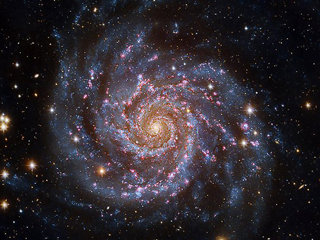
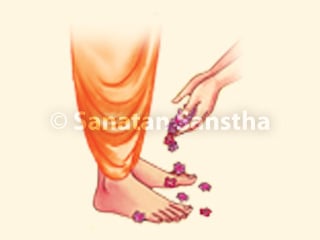 What is the difference in getting desires fulfilled from saint and subordinate deity?
What is the difference in getting desires fulfilled from saint and subordinate deity?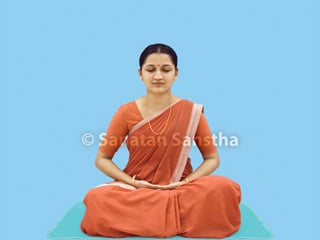 How are deities associated with various organs in Human body?
How are deities associated with various organs in Human body?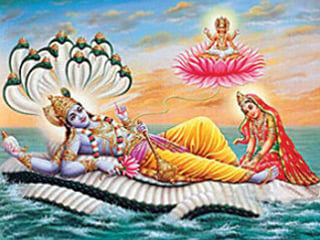 Why does law of Karma not apply to absolute incarnation?
Why does law of Karma not apply to absolute incarnation?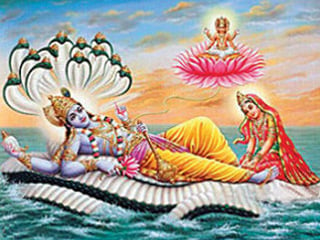 Why does God not assume an incarnation as soon as unrighteousness begins to grow?
Why does God not assume an incarnation as soon as unrighteousness begins to grow?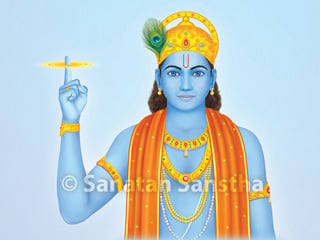 When is an incarnation known as absolute incarnation?
When is an incarnation known as absolute incarnation?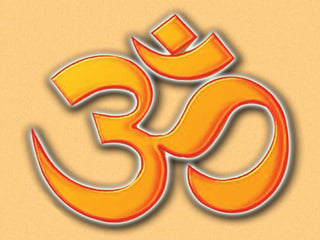 Why is mankind attracted towards Supreme God?
Why is mankind attracted towards Supreme God?